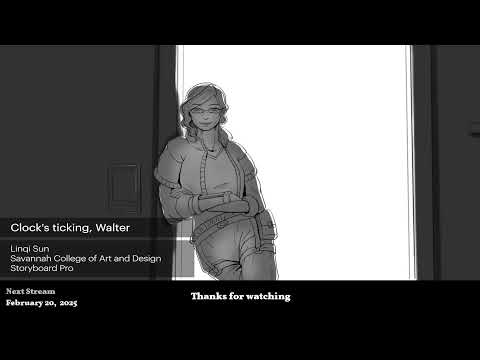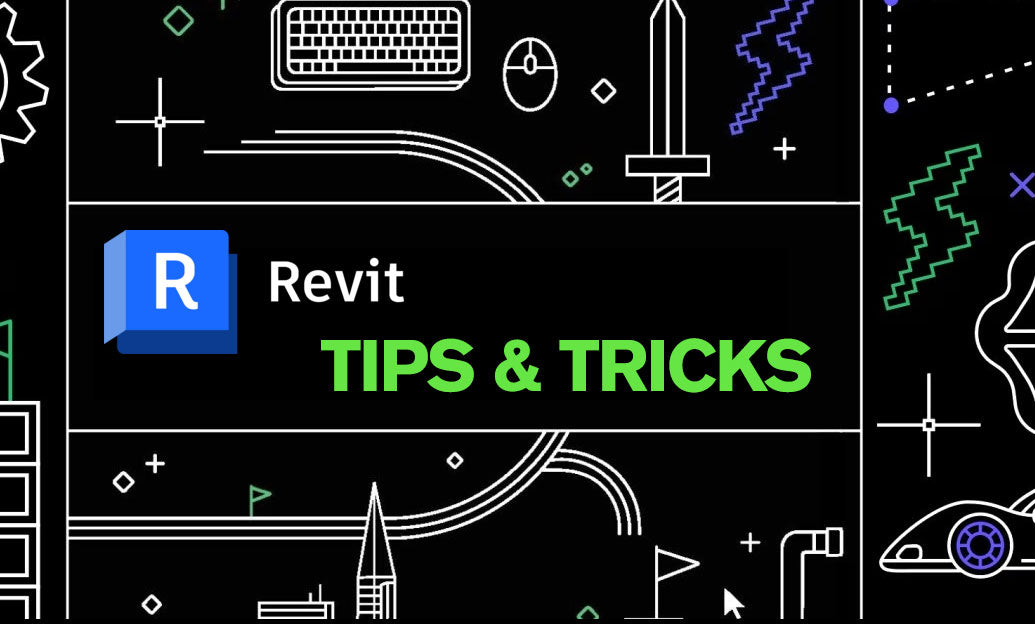Your Cart is Empty
Customer Testimonials
-
"Great customer service. The folks at Novedge were super helpful in navigating a somewhat complicated order including software upgrades and serial numbers in various stages of inactivity. They were friendly and helpful throughout the process.."
Ruben Ruckmark
"Quick & very helpful. We have been using Novedge for years and are very happy with their quick service when we need to make a purchase and excellent support resolving any issues."
Will Woodson
"Scott is the best. He reminds me about subscriptions dates, guides me in the correct direction for updates. He always responds promptly to me. He is literally the reason I continue to work with Novedge and will do so in the future."
Edward Mchugh
"Calvin Lok is “the man”. After my purchase of Sketchup 2021, he called me and provided step-by-step instructions to ease me through difficulties I was having with the setup of my new software."
Mike Borzage
Enhancing User Experience in Modern Design Tools: Innovations and Challenges
January 26, 2025 6 min read


The user experience (UX) in modern design tools has become a pivotal aspect of the creative process. As the demands of designers evolve, so does the need for software that not only meets functional requirements but also enhances the overall workflow. This blog post delves into the importance of UX in design software, exploring key innovations and their impact on the design process, as well as the challenges and future directions in this dynamic field.
The Importance of User Experience in Modern Design Tools
User experience in design software is more than just an attractive interface; it's about creating a seamless interaction between the designer and the tool. Defining UX in design applications involves understanding how users engage with software to accomplish their tasks efficiently and effectively. It's essential to differentiate UX from user interface (UI) design, as UX encompasses a broader spectrum, including usability, accessibility, and the overall satisfaction a user derives from the product. While UI focuses on the visual elements and aesthetic appeal, UX prioritizes the functionality and ease of use that ultimately affect productivity and creativity.
Historically, UX in design tools has evolved significantly. In the early days, design software was often complex and unintuitive, requiring extensive training and expertise. The evolution began with the introduction of graphical user interfaces (GUIs), which replaced text-based commands with visual icons and menus. This shift marked a milestone in making software more accessible. Subsequent advancements, such as the development of object-oriented programming and the integration of cloud technologies, further shaped UX standards. Key advancements like collaborative platforms and responsive design environments have transformed how designers work, allowing for greater flexibility and connectivity.
The importance of UX for designers and teams cannot be overstated. A well-designed user experience enhances productivity by streamlining workflows and reducing unnecessary steps. It minimizes user frustration by providing intuitive navigation and clear functionalities, which is crucial in high-pressure environments where time and efficiency are paramount. By reducing the learning curve associated with complex tools, designers can focus more on innovation and less on mastering the software. This shift not only improves individual performance but also fosters better collaboration within teams, as everyone can interact with the tools effectively.
Key Innovations Enhancing User Experience
One of the most significant innovations enhancing UX is the development of intuitive interfaces and customizable workspaces. Features like drag-and-drop functionalities simplify the design process, allowing users to manipulate elements effortlessly without delving into complex commands. Personalized dashboards enable designers to arrange tools and resources according to their specific needs and preferences, thereby optimizing their workflow. These customizable workspaces provide a tailored experience that adapts to different project requirements and individual working styles. The ability to modify the interface ensures that designers can focus on creativity rather than navigating through irrelevant features.
The integration of artificial intelligence (AI) and machine learning into design software represents a groundbreaking advancement. AI-driven features offer predictive design suggestions, helping designers anticipate trends and optimize their work. For instance, AI can analyze design patterns and recommend layouts or color schemes that align with current market preferences. Automated tasks and workflow optimizations, such as auto-aligning elements or generating code snippets, reduce manual effort and minimize errors. These intelligent systems enhance efficiency and allow designers to allocate more time to conceptualization and innovation.
Advanced visualization and interactive features have significantly improved the user experience by making complex designs more manageable. Real-time rendering and 3D visualization enable designers to see immediate results of their adjustments, facilitating quicker iterations and decision-making. Interactive tutorials and guided workflows support users in learning new features or techniques within the software. By providing hands-on assistance and instant feedback, these tools enhance the learning process and encourage users to explore the full capabilities of the software.
Accessibility enhancements are crucial for supporting a diverse user base. Design tools now offer features that cater to various needs, such as screen readers for visually impaired users, keyboard navigation for those who cannot use a mouse, and customizable interface scaling for different screen sizes. Compliance with accessibility standards and guidelines ensures that software is usable by everyone, regardless of ability. By prioritizing accessibility, developers not only expand their user base but also promote inclusivity within the design community.
- Drag-and-drop functionalities for effortless element manipulation
- Personalized dashboards allowing custom tool arrangements
- AI-driven predictive suggestions enhancing design efficiency
- Real-time rendering providing immediate visual feedback
- Accessibility features supporting diverse user needs
Impact of UX Innovations on the Design Process
UX innovations have a profound impact on streamlining workflow and enhancing collaboration. Real-time collaboration tools enable multiple designers to work on the same project simultaneously, regardless of their physical location. This functionality fosters a more dynamic and cohesive team environment. Seamless integration with other design and project management software eliminates the need to switch between different applications, reducing the potential for errors and saving time. The ability to centralize work processes enhances efficiency and empowers teams to deliver projects more effectively.
Boosting creativity and flexibility is another significant impact of UX innovations. Tools that encourage experimentation, such as non-destructive editing and version history, allow designers to explore ideas without the fear of losing previous work. Flexible design options, including customizable templates and adaptive interfaces, accommodate a wide range of projects and personal styles. By removing constraints and providing a supportive environment for creative exploration, these tools enable designers to push the boundaries of their work.
Improving learning and onboarding processes is essential for software adoption and proficiency. Enhanced onboarding experiences, equipped with interactive tutorials and step-by-step guides, help new users become familiar with the software's capabilities quickly. Contextual help features provide immediate assistance within the workflow, reducing the need to consult external resources. By simplifying the learning curve, designers can integrate new tools into their processes more smoothly, leading to greater efficiency and satisfaction.
Increasing user satisfaction and retention is a direct result of positive UX. When designers find software that aligns with their needs and enhances their workflow, they are more likely to continue using it and recommend it to others. High adoption rates are often linked to software that provides a consistent and enjoyable user experience. Building brand loyalty through exceptional UX is a strategic advantage for software developers, as it fosters a dedicated user base and encourages organic growth through word-of-mouth referrals.
- Real-time collaboration enhancing team productivity
- Flexible tools fostering innovative design approaches
- Interactive tutorials streamlining the onboarding process
- Positive UX leading to higher user retention and loyalty
Challenges and Future Directions in UX for Design Software
Balancing complexity with usability remains a significant challenge in UX design. As software evolves to include more advanced functionalities, there's a risk of overwhelming users with intricate interfaces. Developers must find ways to present powerful features in an accessible manner, ensuring that the software remains approachable for both novice and experienced users. Maintaining simplicity while offering depth requires thoughtful design and a user-centric approach that prioritizes essential tasks and minimizes unnecessary complexity.
Ensuring accessibility and inclusivity is an ongoing responsibility. Continuously improving accessibility features means staying updated with the latest standards and addressing feedback from diverse user groups. Catering to users with varying needs involves implementing features like adjustable contrast settings, text-to-speech capabilities, and support for different input devices. By actively working towards inclusivity, developers can create tools that empower all designers, regardless of physical abilities or technical expertise.
Adapting to emerging technologies is crucial for keeping design software relevant and competitive. Incorporating technologies like augmented reality (AR) and virtual reality (VR) can offer immersive design experiences but also introduce new complexities in UX design. Keeping pace with advancements in AI and machine learning requires ongoing research and development. The challenge lies in integrating these technologies in a way that enhances the user experience without adding unnecessary complications.
Data privacy and security considerations have become increasingly important with the rise of cloud-based services and collaborative platforms. Protecting user data while providing personalized experiences involves implementing robust encryption methods and transparent data policies. Addressing security challenges related to integrated features, such as third-party plugins or extensions, is essential to maintain user trust. Developers must prioritize security to prevent breaches that could compromise sensitive project information.
Conclusion
In summary, the user experience in modern design tools has been significantly enhanced through key innovations such as intuitive interfaces, AI integration, advanced visualization, and accessibility improvements. These advancements have transformed the way designers interact with their tools, leading to increased productivity, creativity, and satisfaction. The most impactful UX advancements are those that seamlessly integrate into the designer's workflow, providing support without hindrance.
The future of UX in design software is poised to embrace emerging technologies and trends. Anticipated developments include further integration of AI to provide more intelligent assistance, the use of AR and VR for immersive design environments, and enhanced collaborative features that bridge global teams. These trends will shape UX by offering new ways to conceive and execute design projects. Staying ahead of these developments requires a commitment to innovation and a focus on user-centered design principles.
Final thoughts on the importance of continuous UX improvement emphasize that the evolution of design tools is an ongoing process. By consistently prioritizing the needs and experiences of users, developers can create software that not only meets current demands but also anticipates future challenges. Encouraging designers and developers to prioritize UX in future developments ensures that the tools remain relevant, effective, and enjoyable to use. The commitment to continuous improvement in UX is essential for fostering a vibrant and dynamic design industry that supports creativity and innovation at every level.
Also in Design News

2D/3D Animation:Collaboratory with Mike Morris and Aaron Paetz
February 20, 2025 1 min read
Read More
ZBrush Tip: Enhancing Organic Sculpting Techniques in ZBrush: Key Tips and Resources
February 20, 2025 2 min read
Read More
Revit Tip: Mastering Revit's Edit Profile Tool for Customized Design Efficiency
February 20, 2025 2 min read
Read MoreSubscribe
Sign up to get the latest on sales, new releases and more …


